|
When the United States declared war on April 6, 1917, Eureka men were eager to volunteer. In the April 12 edition of the Woodford County Journal it was reported that 14 had enlisted or were expected to enlist. By the following Thursday an additional 10 men had enlisted. Many of the new soldiers were initially stationed in Peoria for training. On May 11 the Daughters of Veterans organization hosted a celebration in their honor with a band and a crowd welcoming the soldiers’ arrival on the train, games on the college athletic field, a dinner on the first floor of the courthouse, and a program in the courtroom featuring a Civil War veteran and patriotic music. On June 5 all men between the ages of 21 and 31 were required to register for the war effort. Approximately 183 men from Olio and Cruger townships registered. Each man was assigned a number and on July 20, 1917, a nationwide drawing of numbers was held. The numbers were telephoned to the Woodford County Journal office and posted on the windows. Men and their families crowded the windows all day to see whose numbers were drawn. The numbers and names were published in the newspaper the following week. Woodford County was expected to fill a quota of 171 men, and in mid-August the County Exemption Board started examining the first 350 men whose numbers were called. By early September the full quota of 171 men was filled after a second round of examinations. Out of all the men who volunteered or were drafted from Eureka in 1917 and 1918, only two lost their lives. One volunteered early and the second was part of the first draft round. Their names were Benjamin F. Haecker and Frank Harold Richardson. Benjamin F. “Bink” Haecker was born on July 11, 1898, in Eureka to Carl Haecker and Lena Metz. His father died in 1912. He attended Eureka High School until his sophomore year, and then he worked for E. Dierkes and Arthur Elkin as a clerk. Benjamin was one of the first young men from Woodford County to enlist—just nine days after war was declared on April 6, 1917. He initially trained in Peoria and did attend the Daughters of Veterans celebration in Eureka on May 11. He was sent to Camp Logan, Texas, in September for training. In May of 1918 he was shipped overseas. A letter he wrote to his parents in June was printed in the July 18 issue of the Woodford County Journal. He wrote that he was glad he volunteered and was looking forward to the war being over and coming home. At that time he was a wagoner in Company A, 108th Ammunition Train, 33rd Division. His last letter home was written on October 27 and received by his family on November 25. In the letter he said he was well and back from the front for a few days rest. Unfortunately, he died of meningitis on November 24. His death occurred just two weeks after the signing of the armistice on November 11, 1918. His family was notified of his death on December 9. During the war, death from disease outnumbered battle casualties for American soldiers. Haecker is buried in the Meuse-Argonne American Cemetery, Romagne-sous-Montfaucon, Lorraine, France. According to the Woodford County Journal, he was the first boy from Eureka and Olio Township to meet death in service overseas. “He had offered his life to his country in its hour of distress, even to giving it up if that needs be in order that the principles for which the United States was fighting might triumph” (Woodford County Journal, 12 December 1918). In November of 1919 an American Legion Post was established in Eureka. It was named the Benjamin F. Haecker American Legion Post. The picture below of the first post building shows Haecker’s name above the door. Frank Harold Richardson was born on August 21, 1894, in Eureka to Charles V. Richardson and Anna Hamilton (later Renz). His father died prior to 1900, and his mother died in 1910. His boyhood and young adult years were spent in the home of his grandmother, Mrs. Mary Hamilton. He graduated from Eureka High School in 1913. He then enrolled at Eureka College and flourished. His activities included: track team, YMCA, business manager of the yearbook, Edmund Burke Literary Society, Booster Club president, Senior Class president, and a biology instructor his senior year. He graduated in 1917. He registered for the draft on June 5, and his number was in the first group to be called. He passed the physical and was drafted. He first joined the United States Army Signal Corps, but in November of 1917 he transferred to the Aviation Department. He received his commission as Lieutenant in August 1918. Shortly before his expected deployment to France, Richardson was in an aircraft accident in Texas and reportedly fell 400 feet. In the initial report of the accident in the September 5 edition of the Woodford County Journal a favorable outcome was expected despite a fractured leg and a severe injury at the base of his skull. Unfortunately his condition worsened, and he died on September 12 in San Antonio. His funeral was held on September 17 at the Presbyterian Church. Eureka businesses closed for two hours that afternoon to show respect. A large group of mourners gathered at the church—overflowing available pews. Representatives of the Grand Army of the Republic attended and were given seats of honor. He was buried in Olio Township Cemetery, and an American Legion marker accompanies his stone. “Our young soldier has given all, and we would keep nothing back in the cause for which he died. The government that called our Harold to the colors calls every one of us to the standard of liberty and righteousness. This is a solemn and inspiring moment for ‘Our Lord is marching on.’” ~ Rev. D. S. McCaslin, Presbyterian Church pastor during funeral service (Woodford County Journal, 19 September 1918). The above information was part of a display I created for the Eureka Public Library in March 2020 to accompany a poster exhibit created by the National Museum of American History. Unfortunately, the display and poster exhibit was only up for a few weeks due to our sudden COVID-19 closure. During the first week of the display, two community members approached me and said they had some interesting World War I items they wanted to share. Matt Haas brought in a soldier’s tunic (or short coat), which we placed in our display case. Carol Burton Sebastian brought in a framed silk pillow case commemorating the war, which we placed above a cupboard. I want to thank both of them for their generosity! Pictures of the items are below so more people can enjoy these fascinating remnants of history. Information for this blog post was researched from issues of the Woodford County Journal, which has been digitized and is available through Newspapers.com. Free online access to this incredible resource is available at the library when we are open! Online genealogy resources, Eureka College yearbooks (also located at the library), as well as two additional Eureka history books were also consulted: History of Eureka, Illinois by Burris Dickinson (Burris Dickinson, 1985) and Eureka, Illinois: Celebrating 150 Years by the Woodford County Historical Society (M.T. Publishing company, 2009). Addendum: Recent research into the Spanish Influenza in 1918 turned up two additional names of Eureka soldiers who died. Henry William Jennings died at the Great Lakes Naval Station Hospital of pneumonia on February 6, 1918. He was the first Eureka boy to die in service during World War I. He was born in Colorado in 1894 and came to Eureka about 1914. He enlisted in the U.S. Navy in December of 1917. He is buried in the Mt. Zion Cemetery.
On October 17, 1918, the Woodford County Journal reported the death of Claude Sharpe at Camp Hancock, Georgia. Sharpe had left Eureka for Camp Grant in Rockford in September. Camp Grant was one of the military camps suffering from a Spanish Influenza outbreak at the time. After a short stay, he was transferred to Camp Hancock where he developed symptoms and passed away. Sharpe is buried in Olio Cemetery. Comments are closed.
|
AuthorLibrarian Cindy O'Neill loves researching local history! She has extensive experience in historical research, genealogy, and archival resource management. She previously worked in the archaeology and museum fields and has Master's degrees in both history and library science. Recent local history projects include a history of the Eureka Pumpkin Festival, the creation of a digital archive of festival photos and memorabilia on the Illinois Digital Archives website, and an architectural history of the Eureka Christian Church (Disciples of Christ). Archives
January 2021
Categories |


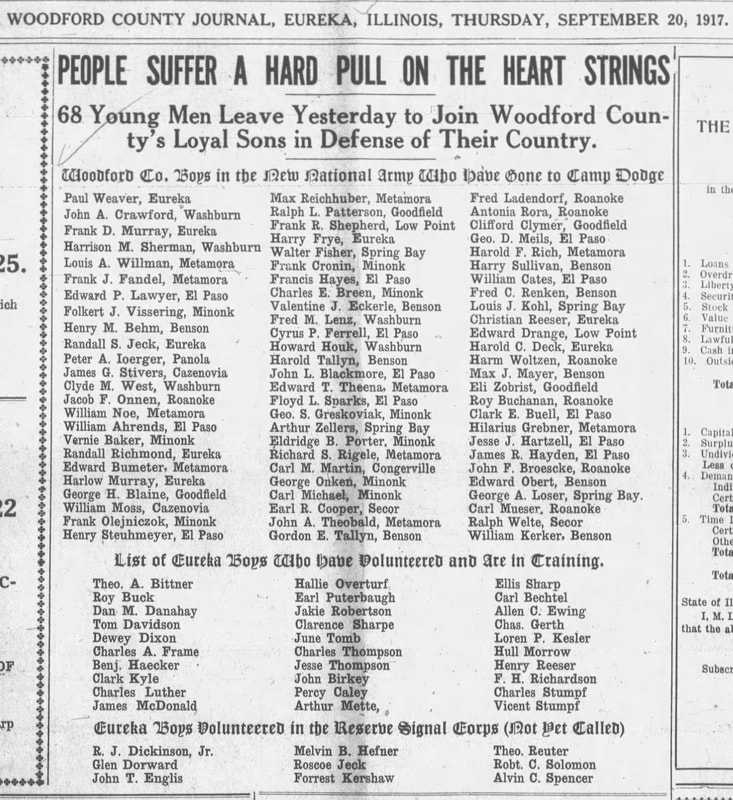
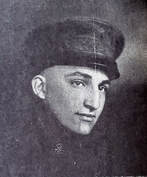
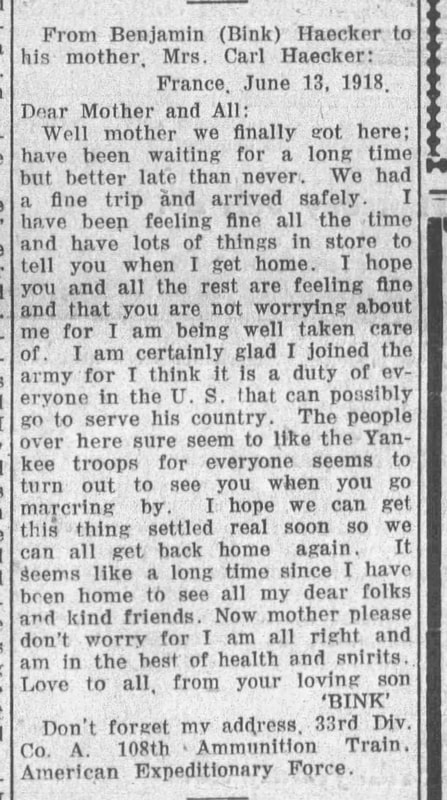
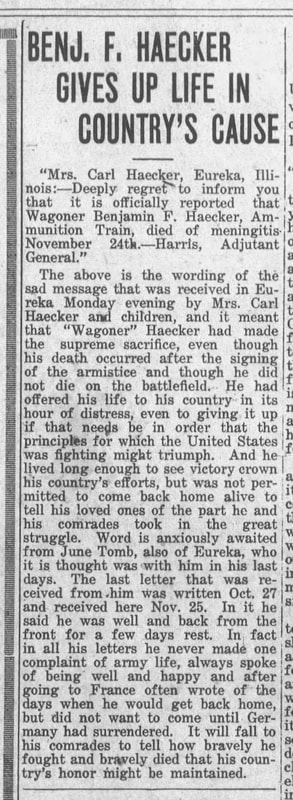
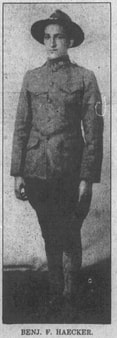
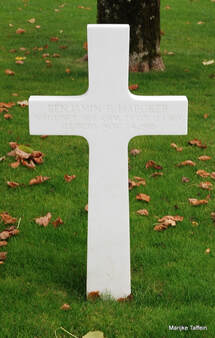
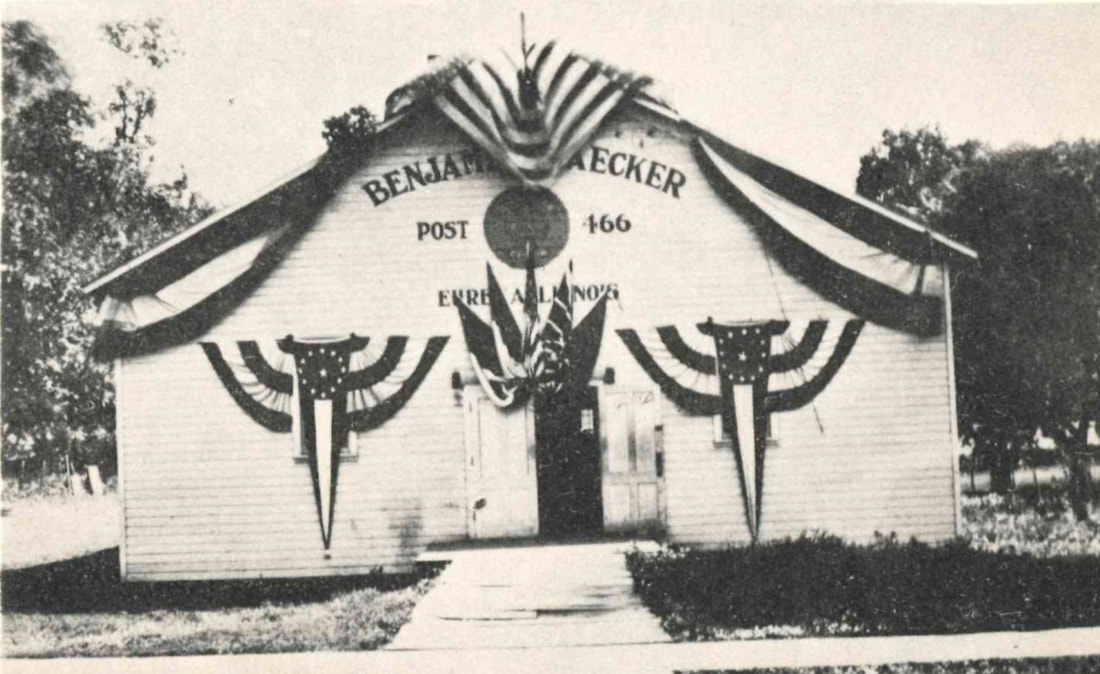
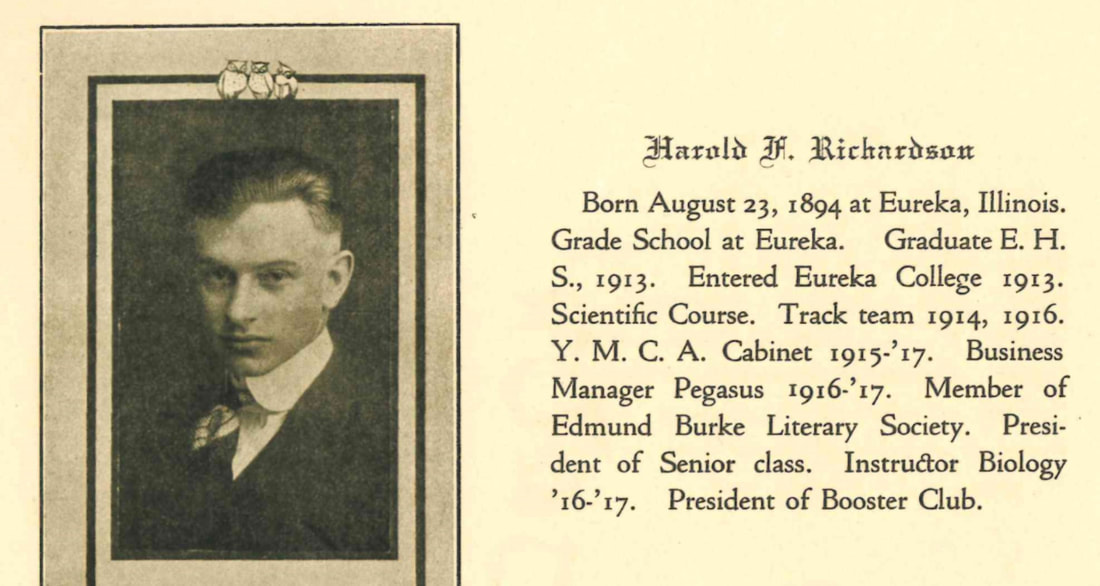
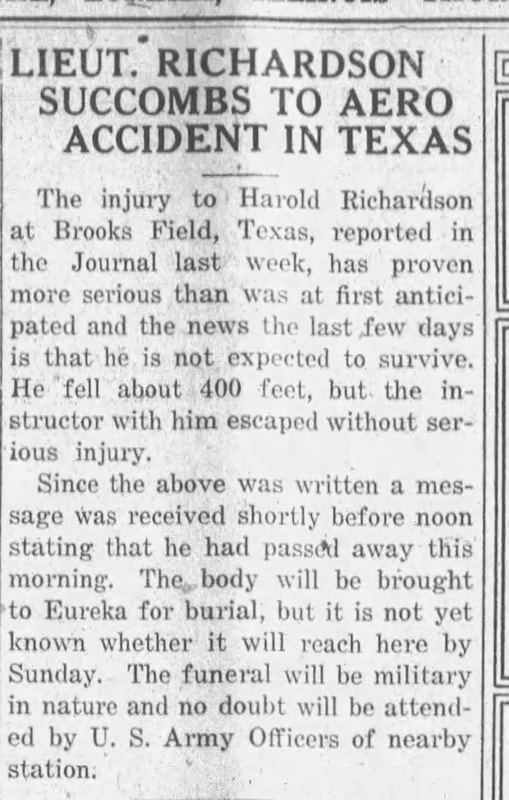
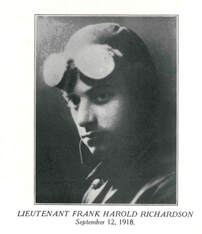
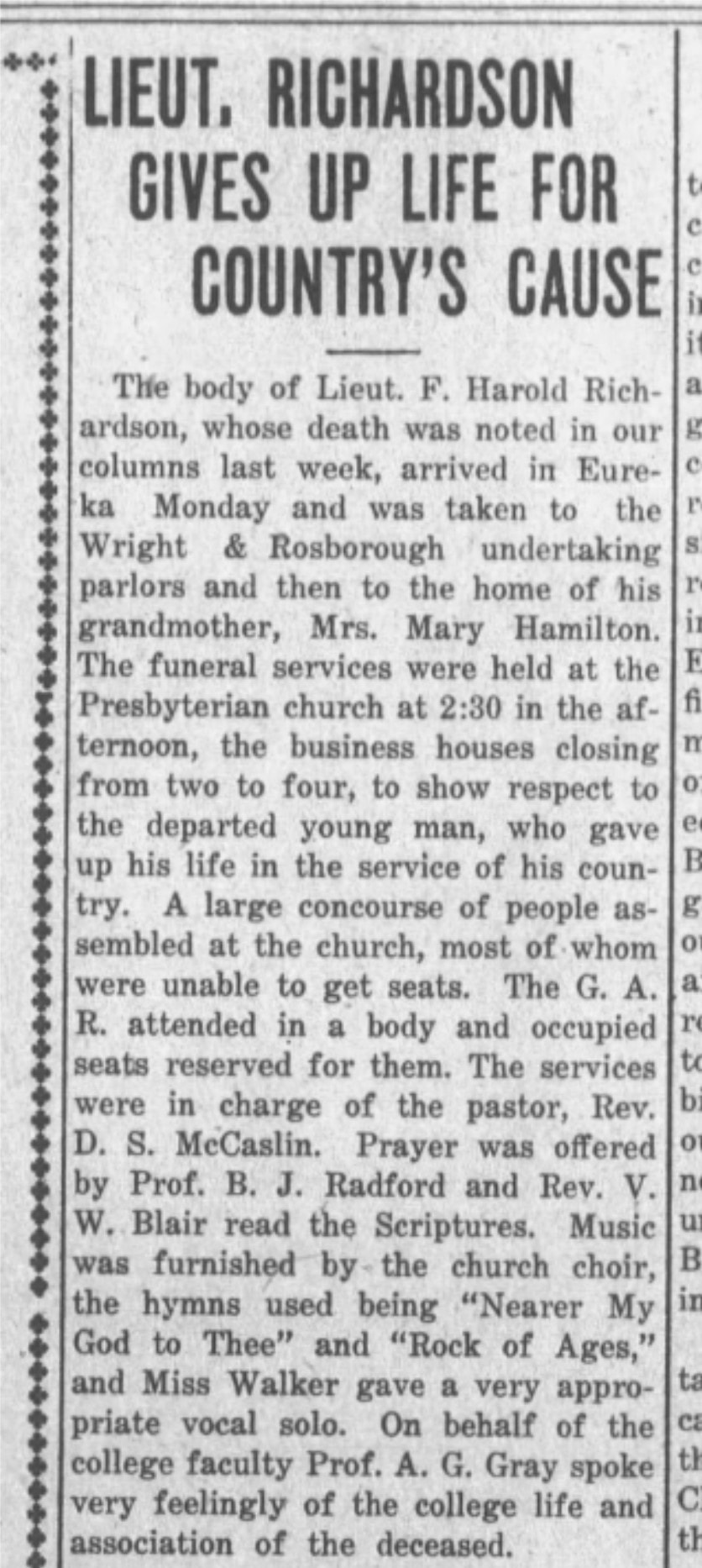
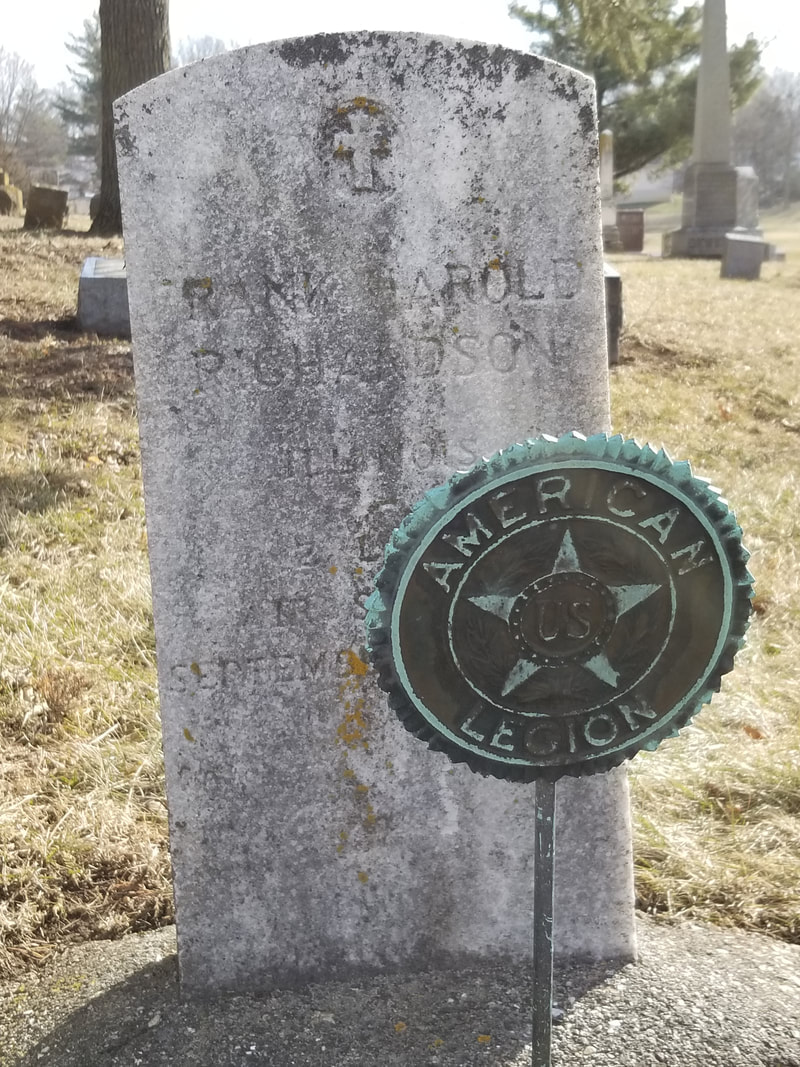
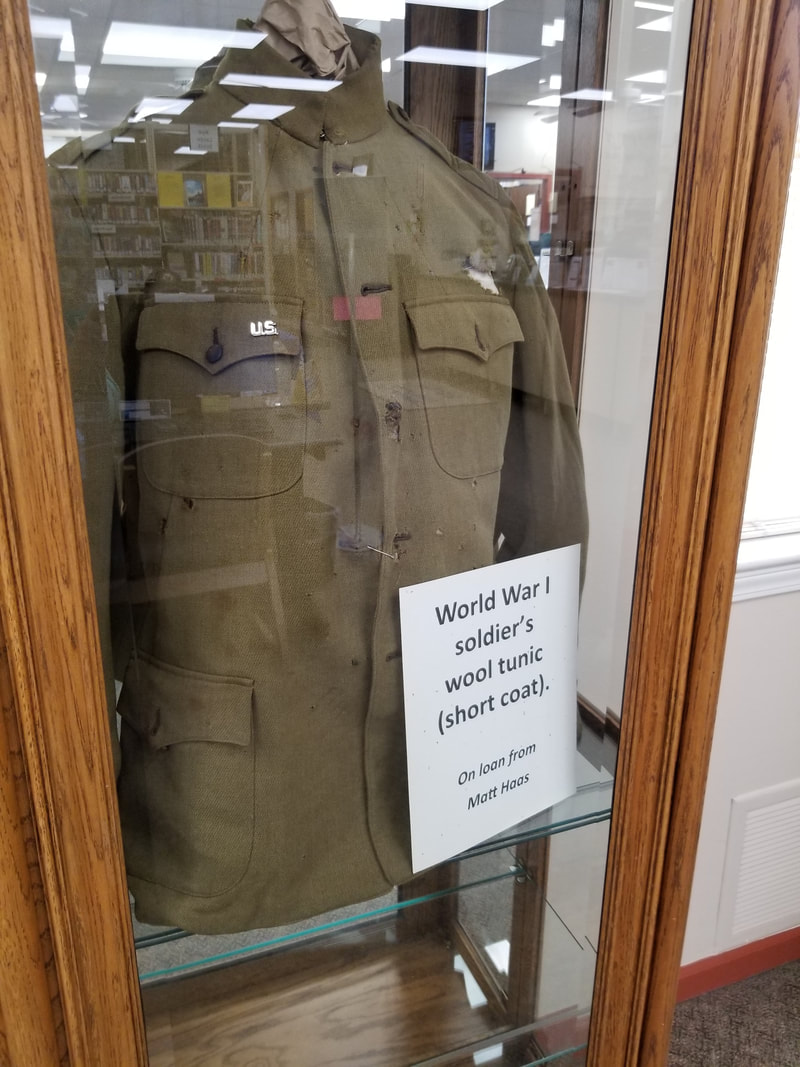
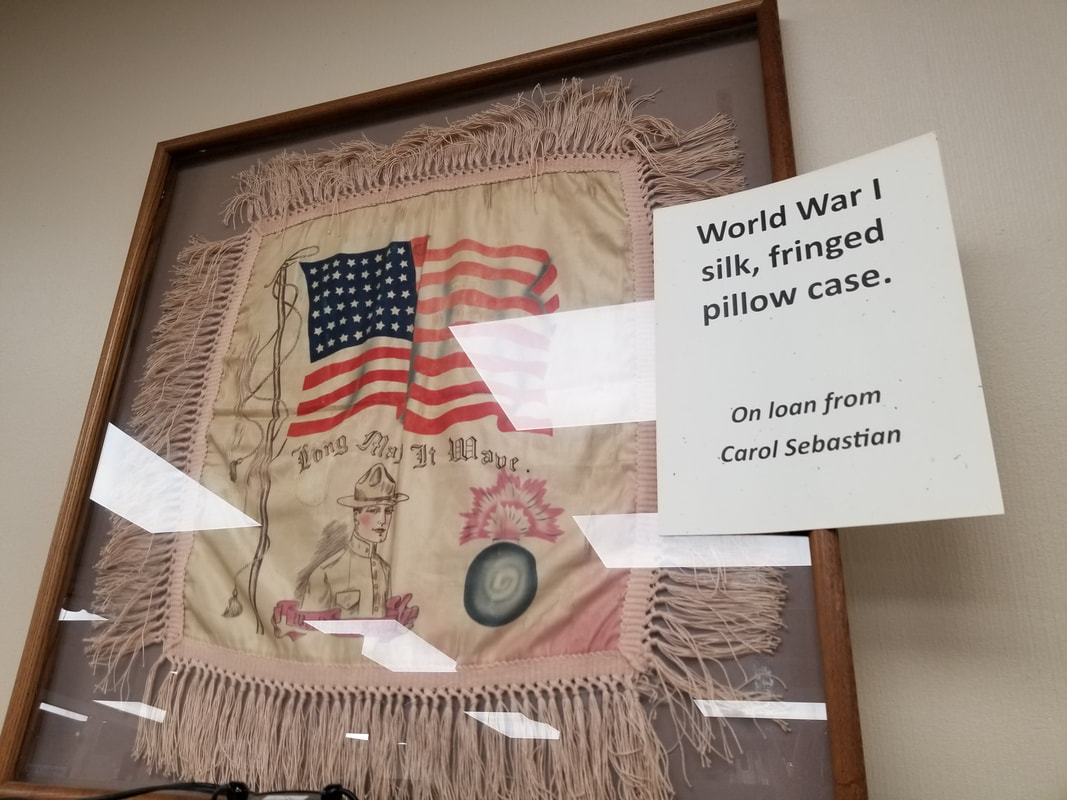
 RSS Feed
RSS Feed